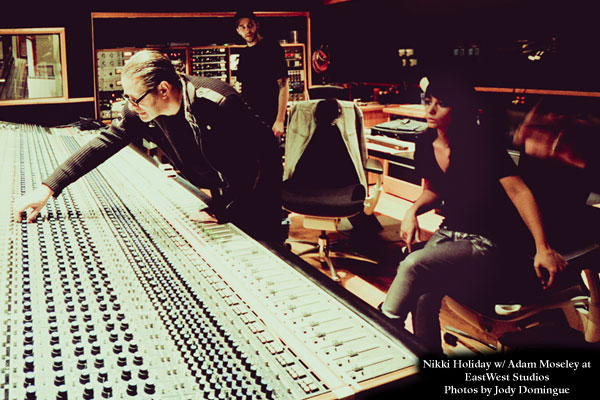
When it comes to mixing, one of the things that separates the pros from the wannabes is their use of effects. While it’s true that not every song needs a lot of effects, you’d be surprised just how many are on a modern mix, even though it might sound like not very many are used at all. That’s the trick. Many times you want something to sound larger than life, but you don’t want it to sound like it’s swimming in artificial sonic goo, and that’s where the effects tips and tricks of the pros come in. I’ve culled a number of the most important effects techniques from my two books on mixing (The Mixing Engineer’s Handbook and The Audio Mixing Bootcamp) into a short article that will hopefully raise the quality of your mixes immediately. By the way, these are the tricks that I’ve been collecting through the years from some of the biggest hit-makers in the business whose works you hear on the radio, Spotify and Pandora every day. Since we simply can’t cover everything in an article like this, we’ll look specifically at reverb and delay.
6 PRINCIPLES FOR ADDING EFFECTS
Before we use any effects, it helps to know when and why they work. There are six principles that offer a general guideline on how effects can be used.
Principle 1: Picture the performer in an acoustic space, then recreate that space around them. This method usually saves time, as it is a lot faster than simply experimenting with different effects presets until something excites you (although that method can work too). Also, the artificially created acoustic space doesn’t need to be a natural one. In fact, as long as it fits the music, the more creative the better.
Principle 2: Smaller reverbs or short delays make things sound bigger. Reverbs with decays under a second (and usually much shorter than that) and delays under 100 milliseconds (again usually a lot shorter than that) tend to make the track sound bigger rather than push it back in the mix, especially if the reverb or delay is in stereo.
Many times a reverb will be used with the decay parameter turned down as far as it will go (which may be as low as .1 second), but this setting is sometimes the most difficult for a digital reverb or plugin to reproduce, resulting in a metallic sound. If this occurs, sometimes lengthening the decay time a little or trying a different preset will result in a smoother, less tinny sound, or, try another plugin or hardware unit that performs better under these conditions.
Principle 3: Long delays, and long reverb pre-delay and reverb decay settings push a sound further away if the level of the effect is loud enough. Delays and pre-delays longer than 100 milliseconds are distinctly heard and begin to push the sound away from the listener. The trick between something sounding big or just distant is the level of the effect. When the decay or delay is short and the level is loud, the track sounds big. When the decay or delay is long and loud, the track just sounds far away.
Principle 4: If delays are timed to the tempo of the track, they add depth without being noticeable. Most mixers set the delay time to the tempo of the track. This makes the delay pulse with the music and adds a reverb type of environment to the sound. It also makes the delay seem to disappear as a discrete repeat, but still adds a smoothing quality to the mix element.
Timing the Delays
Three of the many ways to time the delay to the track:
1. Sync the delay in your DAW. Almost every delay plugin provides a way for you to sync it to the tempo of the track and it’s as easy as a simple selection.
2. Tap the tempo in. Most plugins allow for tapping in the tempo via the space bar on your keyboard. Although it can usually get a rough idea of the tempo by about the third tap, give it eight or 10 to average out and give you a more accurate reading.
3. If you want to easily find the right delay time to the track and you have an iPhone, grab my “Delay Genie” app from the iTunes App Store. It’s free and will make timing your effects to the track easy.
Principle 5: If delays are not timed to the tempo of the track, they stick out. Sometimes you want to distinctly hear a delay and the best way to do that is to make sure that the delay is not exactly timed to the track. Start by first putting the delay in time, then slowly alter the timing until the desired effect is achieved.
Principle 6: Reverbs sound smoother when timed to the tempo of the track. Reverbs are timed to the track by triggering them off of a snare hit and adjusting the decay parameter so that the decay just dies before another snare hit (or two in some cases). The idea is to make the decay “breathe” with the track. One way to achieve this is by making everything as big as possible at the shortest setting first, then gradually make the settings longer until it’s in time with the track.
* Of course, the biggest part of adding effects to a mix is experience, but keeping these principles in mind will provide a perfect place to start.














